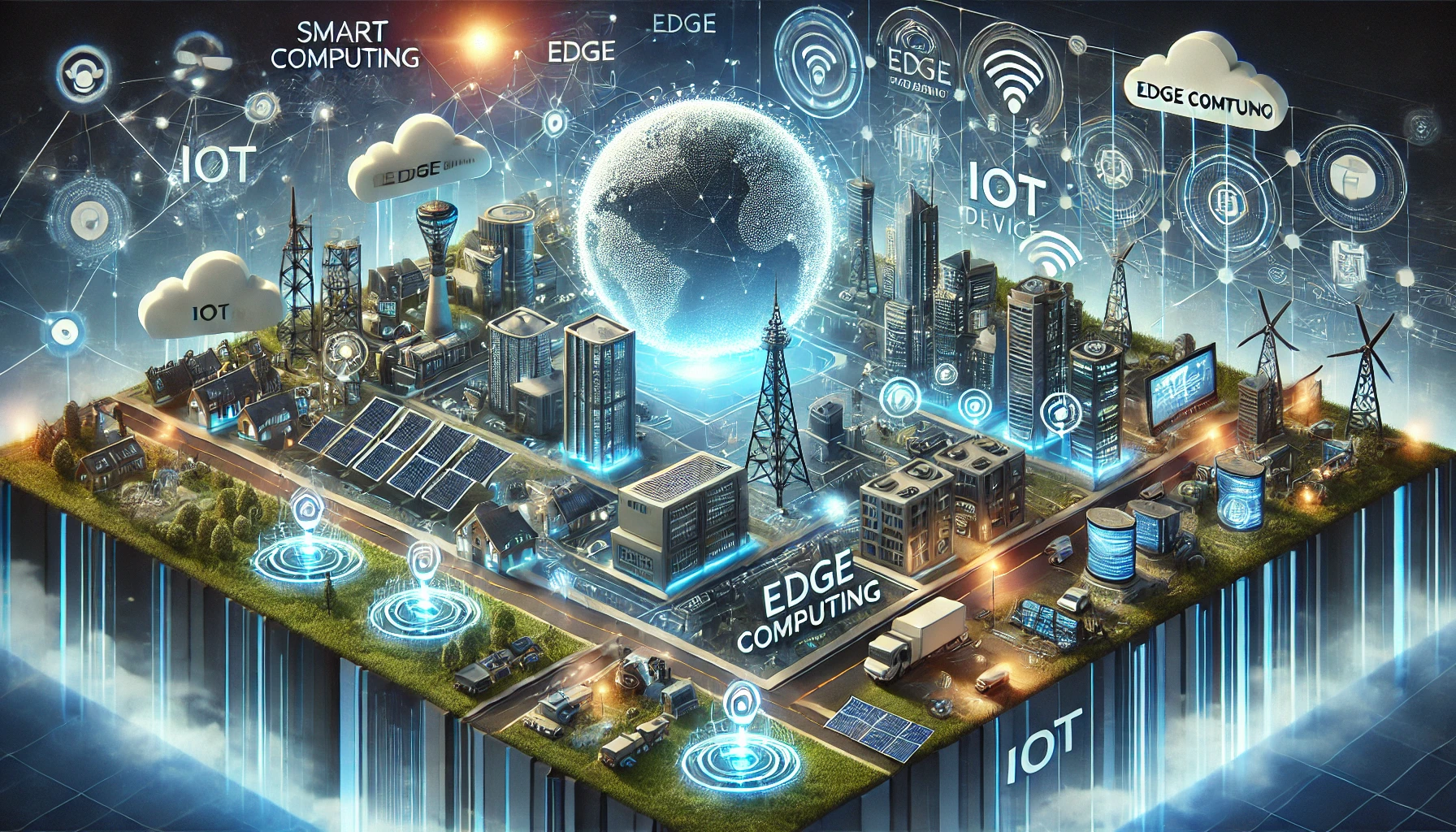Exploring the Impact of Edge Computing on IoT Devices. The Internet of Things (IoT) has transformed the way we interact with technology, connecting everything from smart appliances to industrial machinery. However, the growing volume of IoT data poses significant challenges in terms of latency, bandwidth, and security. Enter edge computing—a paradigm shift that processes data closer to its source, enhancing efficiency and reducing dependency on centralized systems. This article examines the benefits, real-world applications, and challenges of edge computing in the IoT landscape.
What Is Edge Computing?
Edge computing is a distributed computing model that processes data near its source rather than relying on distant cloud servers. By decentralizing data processing, edge computing minimizes latency, reduces bandwidth usage, and improves overall performance. This approach is especially valuable for IoT devices that generate massive amounts of real-time data.
For example, instead of sending all data from a smart thermostat to the cloud, edge computing enables local processing, allowing immediate adjustments to temperature settings. This local processing capability is critical for applications requiring fast response times or operating in environments with limited internet connectivity.
Benefits of Edge Computing for IoT
1. Reduced Latency
Latency—the delay in data transmission—can significantly impact IoT performance, particularly in applications requiring real-time responses. Edge computing processes data locally, ensuring near-instantaneous reactions. This is crucial for time-sensitive use cases such as autonomous vehicles, where even a slight delay can have serious consequences.
2. Enhanced Security
By keeping sensitive data closer to its source, edge computing reduces the risk of interception during transmission. Localized data processing also allows for the implementation of robust security measures tailored to specific devices or environments. This decentralized approach mitigates the impact of breaches that could compromise centralized systems.
3. Bandwidth Optimization
Transmitting large volumes of IoT data to the cloud can strain network bandwidth and increase costs. Edge computing alleviates this burden by processing and filtering data locally, sending only relevant information to the cloud. This not only optimizes bandwidth usage but also reduces operational expenses for businesses relying on IoT systems.
4. Improved Reliability
Edge computing ensures that IoT devices remain operational even during network outages. Localized processing enables devices to function independently of cloud connectivity, maintaining performance in critical scenarios such as healthcare monitoring or industrial automation.
Applications of Edge Computing in IoT
1. Smart Cities
Edge computing is a cornerstone of smart city initiatives, enabling efficient management of resources like energy, water, and transportation. For instance, traffic management systems equipped with edge technology can analyze real-time data from sensors to optimize traffic flow and reduce congestion.
2. Healthcare
In healthcare, edge computing supports applications like remote patient monitoring and diagnostic devices. By processing data locally, these systems provide real-time insights, allowing medical professionals to make timely decisions. For instance, wearable health devices can alert users to irregularities without relying on cloud servers.
3. Agriculture
Precision agriculture benefits greatly from edge computing, which processes data from IoT sensors monitoring soil moisture, weather conditions, and crop health. Farmers receive actionable insights on-site, enabling them to make informed decisions that optimize yield and conserve resources.
4. Industrial IoT
Manufacturing and logistics industries leverage edge computing for predictive maintenance, real-time monitoring, and automation. Edge-enabled devices in factories detect anomalies in machinery performance, preventing costly downtime and enhancing operational efficiency.
Challenges of Edge Computing
Despite its advantages, edge computing presents several challenges that must be addressed for widespread adoption:
- Infrastructure Requirements: Implementing edge computing necessitates robust hardware and software solutions, which can be costly and complex to deploy.
- Data Management: Storing and processing data locally raises concerns about consistency, redundancy, and scalability.
- Security Risks: While edge computing enhances security by reducing transmission vulnerabilities, localized systems may still be susceptible to physical tampering or malware attacks.
- Lack of Standardization: The absence of standardized frameworks complicates integration and interoperability across different edge computing systems and IoT devices.
The Future of Edge Computing
The future of edge computing is intrinsically linked to the growth of IoT. As IoT devices become more ubiquitous, edge computing will play a pivotal role in ensuring these systems operate efficiently and securely. Key trends to watch include:
- AI Integration: Combining edge computing with artificial intelligence will enable smarter, faster decision-making at the device level.
- 5G Networks: The rollout of 5G technology will enhance edge computing capabilities, enabling seamless connectivity and ultra-low latency.
- Green Computing: Sustainable practices in edge computing, such as energy-efficient processors, will align with broader efforts to reduce environmental impact.
- Standardization Efforts: Industry collaboration to establish universal standards will streamline edge computing adoption and interoperability.
Conclusion
Edge computing is revolutionizing the IoT landscape, offering solutions to critical challenges such as latency, bandwidth limitations, and security risks. Its applications span diverse sectors, from smart cities to agriculture, demonstrating its versatility and potential for driving innovation. However, addressing the challenges of infrastructure, security, and standardization will be essential to unlocking its full potential.
For more insights into transformative technologies, explore Top 5 Emerging Technologies That Will Shape 2025.





Leave a Reply